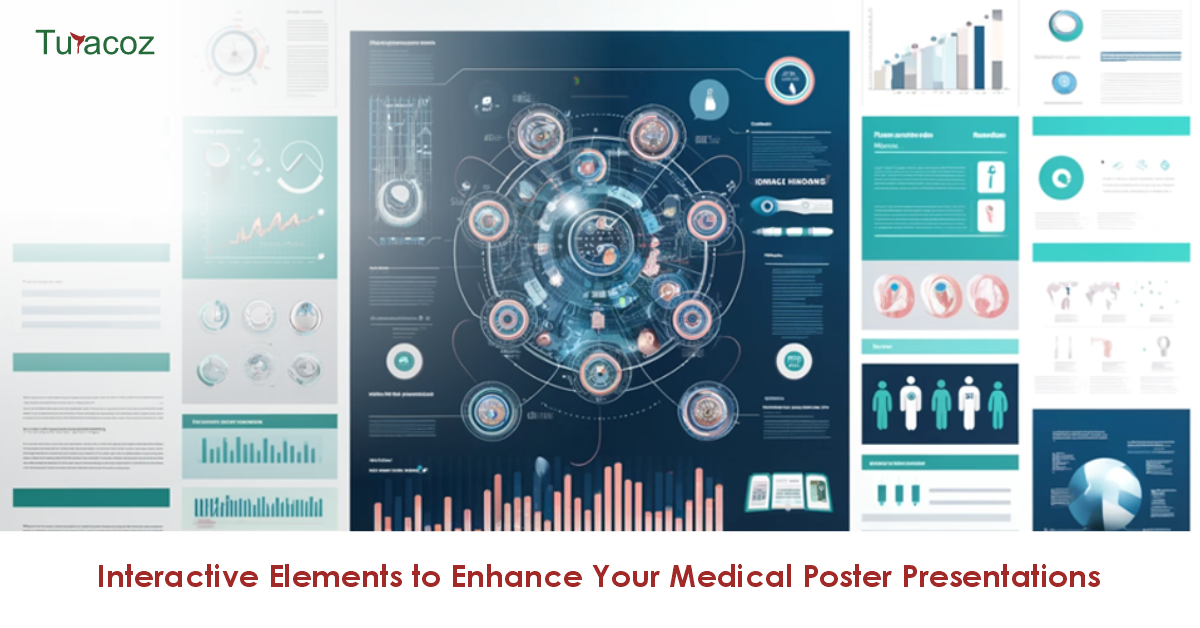In the dynamic world of academia and medical research, effectively communicating your findings through well-designed presentations that captivate the audience is paramount. As medical professionals, we have the privilege and responsibility of sharing our knowledge and insights to drive progress in our field. While traditional poster presentations have long been the standard, the digital age offers us an opportunity to enhance our presentations and captivate our audience.
Poster Presentation journey commences with a thorough understanding of the scientific concepts and essential design elements. These elements include information clarity, colour schemes, typography, images and graphics, and layout. Striking the right balance between white space and information is crucial to prevent clutter and ensure the poster effectively communicates its message. A well-designed poster facilitates audience engagement aiding them in grasping the presenter’s intended message and maintaining their interest as they explore the content. In addition to focusing on design, incorporating storytelling approach enhances clarity and comprehension for the viewer. Furthermore, the advent of digital and e-posters has introduced new opportunities for integrating interactive and multimedia elements, thereby enhancing audience engagement and the overall impact of the poster.
In this blog, we will highlight a range of interactive elements and strategies to elevate the impact of your medical poster presentation.
Before diving into the realm of interactive elements, it’s crucial to understand your audience. Tailoring the interactive elements to suit the preferences and needs of your audience ensures maximum impact and resonance.
Visual Aids:

Visual aids like infographics, charts, and graphs serve as effective tools for simplifying the complex data making it appealing and easily comprehensible to viewers. Additionally, depicting gradation or scales in a pictorial manner adds visual appeal. In case of digital poster, incorporating multimedia elements like videos or animation can significantly enhance engagement and understanding.
Augmented Reality:
Augmented reality (AR) is a cutting-edge technology that adds depth and interactivity to the digital poster, thereby transforming static content into dynamic and engaging presentation. Viewers can engage with the AR integrated digital posters through their smartphones or tablets delving into 3D models, animations, and additional layers of information. This technology increases poster engagement by offering enhanced visualization, interactive demonstration, innovative data visualization techniques, and freedom for viewers to explore the poster at their own pace. Consequently, leveraging AR technology empowers presenters to captivate the audience, facilitate deeper understanding, and create memorable presentations that leave a lasting impact.

QR Codes:

Incorporating QR code into the poster can elevate viewer engagement by directing them to supplementary materials such as videos, animations, or additional research data. By scanning the codes with their smartphones, viewers can easily access these resources, facilitating further learning and exploration.
Interactive Displays:
Integrating touchscreen displays within the poster enables the users to interactively navigate through the content. Incorporating interactive quizzes and puzzles related to your research topic promotes active participation and adds a fun element to the poster. Conducting surveys via the touchscreen function enhances viewer engagement and facilitates feedback collection.

Social Media Integration:

Including social media links to the poster amplifies interaction by allowing viewers to connect beyond the presentation. These links offer instant access to social media platforms, where viewers can discuss and share their insights about the poster. The links also open the doors to a wider online community, encouraging ongoing conversation and collaboration even after the presentation ends.
Hands-on Activities:
Incorporating hands-on activities or experiments can be a powerful way to make your research more tangible and relatable for viewers. By allowing viewers to actively participate and engage with the concepts or methodologies you employed, they can gain a deeper understanding of your work.

Interactive Case Studies:

Presenting case studies with interactive elements allows viewers to explore different scenarios and outcomes, promoting deeper understanding and critical thinking. Incorporating multimedia elements such as patient testimonials or interactive simulations enriches the learning experience.
Collaborative Whiteboards:
Presenting case studies with interactive elements allows viewers to explore different scenarios and outcomes, promoting deeper understanding and critical thinking. Incorporating multimedia elements such as patient testimonials or interactive simulations enriches the learning experience.

To ensure effective communication, keep your poster uncluttered with a clear focus on one main idea, prioritizing essential elements for a concise, visually appealing layout. Avoid overwhelming your audience with too much text or visuals. Integrating interactive elements enhances engagement and understanding, transforming medical poster presentations from static displays to dynamic experiences that engage, educate, and inspire viewers. Additionally, these interactive elements heighten audience engagement, understanding, and collaboration. With technology advancing, the potential for innovative and interactive poster presentations is limitless. Embrace technological innovations to make a lasting remark on your audience.






































